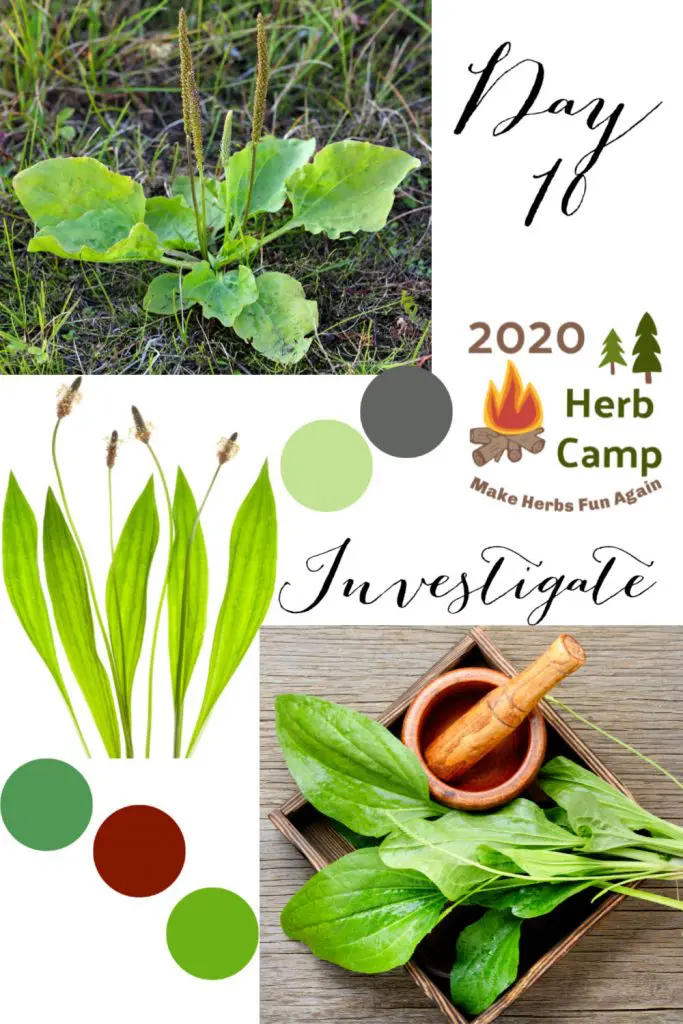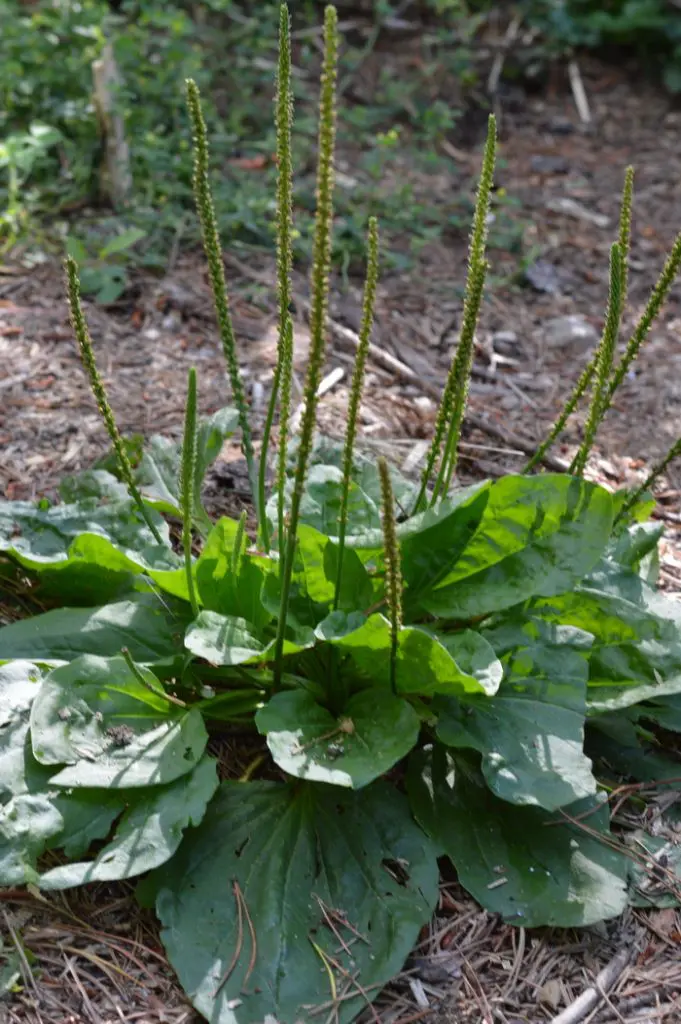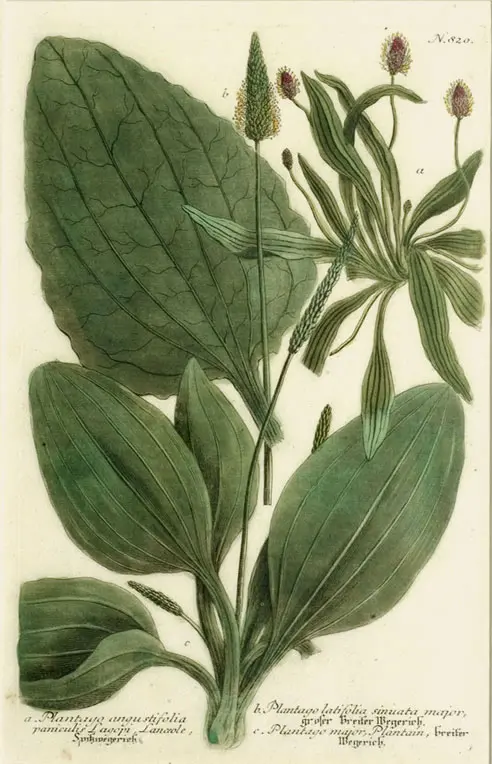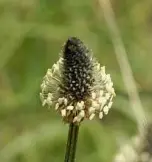Welcome to Herb Camp 2020!
In this second of three weeks of herb camp, the theme is “What do you have in your hand?” What do you have that is growing around you, that you need to heal or to inspire?
In today’s Herb Camp Challenge we’ll look at the Plantaginaceae Plant Family. This is the family that Plantain belongs to.
You probably have one form of plantain growing near you. It is originally from Eurasia, but has naturalized throughout the world.
The traditional Plantain family was small, consisting of only 3 genera and 270 species, almost all of them plantain (Plantago). However, based on genetic evidence, most members of the Figwort or Snapdragon family have been moved into the Plantain family, making this the new “Figwort family.” In addition, the former Mare’s Tail family (Hippuridaceae) and Water Starwort family (Callitrichaceae) were also merged into the Plantain family. In this post we will focus on the traditional classification of the plantain family.
Plantain (Plantago spp) are low growing, green plants with inconspicuous flowers. They most often occur as a low basal rosette with stems of flowers growing from the heart of the rosette.
The leaves are deeply veined with parallel veins and may be spoon shaped (broadleaf plantain) or knife shaped (narrow leaf plantain). Plantain’s size will vary depending on how rich the soil is that you find it growing.
When grown on fertile soil the plants can be several feet wide and tall. When growing in a gravel driveway, plants will be significantly smaller.
The flowers are arranged in dense clusters at the end of the stem that holds them. They bloom from the bottom upward. The individual flowers are usually bisexual, and radially symmetrical. The stamens, petals and sepals are attached below the ovary, making the ovary higher to the other floral parts.
The flowers usually have 4 petals, 4 stamens, and 4 sepals.
While the plants are not of economic importance, one (Plantago psyllium) is a source of seeds used to make psyllium which is used to combat both constipation and mild diarrhea, sold under the brand name Metamucil.
Herbal Use of Plantain
Plantain leaves can be found in most places around the world, even in Australia and New Zealand.
Energetics: Cold and dry
Parts used: Leaves, roots, seeds
Actions: Antimicrobial, anti-inflammatory, antihemorrhagic and an expectorant. It is also analgesic, alterative, antiseptic, anti-viral, anti-toxic ,anti-histamin, anti-inflammatory, anti-rheumatic, anti-tumor, anti-cancer, anti-carcinogenic, a diuretic an expectorant, a hypotensive and an organoleptic.
Known as “Snakeweed”, it is useful for skin conditions and provides almost instant relief for bee stings, and bug bites. It is usually found growing nearby stinging nettle, and a spit poultice of plantain leaves will quench the fire of a stinging nettle burn.
It is also the first herb to grab for spider bites and snake bites. Although for serious bites you should speak to a health professional as soon as possible. A plantain poultice is also useful for boils, slivers, and infections. The allantoin in plantain is similar to the allantoin in comfrey and like comfrey it promotes wound healing, speeds up cell regrowth/healing and softens skin.
Plantain contains high levels of beta carotene (A). It also has ascorbic acid (vitamin C) and vitamin K. Plantain also contains silica which makes plantain useful to support bone growth, hair and nails. This herb is high in soothing mucilage especially the seeds.
The German Commission E has authorized its internal use for coughs and bronchitis, as well as external use for inflammatory skin ailments.
Your turn:
- Find a plantain plant growing close to you. What type of plantain is it? Narrow leaf, broad leaf, or another plantain.
- Make a positive identification using at least 3 sources, if plantain is a new-to-you wild plant.
- What did you learn about plantain that was new information for you?
Leave your answers in the comments below or comment on the thread in the Facebook group.
Note: Click the small arrow on the LEFT to go to the previous day’s Herb Camp Challenge. Click the small arrow on the RIGHT to go to the next day’s Herb Camp Challenge.
References:
- Plantago major in Traditional Persian Medicine and modern phytotherapy: a narrative review
- Cytotoxic effect of Plantago spp. on cancer cell lines
- Antiviral activity of Plantago major extracts and related compounds in vitro
- In Vitro Cytotoxic, Antiviral and Immunomodulatory Effects of Plantago major and Plantago asiatica




I have both the broad an narrow leaf kind. I use it in bug bite and skin salves. I did not know it had so many nutrients or that it was also useful for coughs and bronchitis.
We have broadleaf plantain in our area, when you can find it. I didn’t know it had so many vitamins! Need to dry some to have on hand along with my comfrey. Glad to know it helps it’s bites….
Plantain is one of the very first plants I learned to forage. We have broadleaf. And as I’m covered in mosquito bites and even a couple spots of what is probably poison ivy I am going to go outside right now and make use of it. Thanks for the reminder!
I have broad leaf that I just finished drying. I learned that it is similar to comfrey in usage but maybe a bit safer if new to herbal usage.
Plantain we have nearby is Broadleaf. Have used it for stings and bites. This is a good herb to have growing.. I will have to gather some seeds and plant them up where my husband won’t care that it’s planted. Sad so many herbs are considered to be weeds.